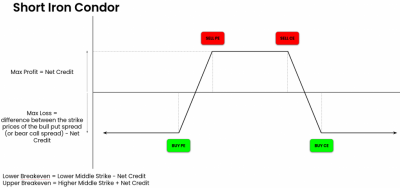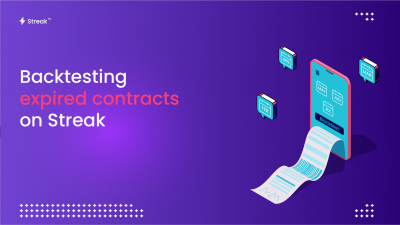Introduction:
When we start learning about the markets and trading, Price and Volume are the two data that we are first introduced to. It is when we start learning about the derivatives market, we start hearing about Open Interest. Open Interest is not as straightforward as Price or Volume. It is no Rocket Science either. The most common definition that you would find over the internet is –
Definition:
Open Interest or OI is the number of open (outstanding) futures or options contracts for a particular market.
It simply means the number of contracts which have not yet been settled. Open Interest is only applicable for futures and options markets. Moreover, OI provides a more accurate picture of the options trading activity, and whether money flows into the futures and options market are increasing or decreasing. You can combine it with Price and Volume to get a better understanding of what traders are doing in the market as opposed to simply looking at the Price and Volume alone.
If this sounds a little complicated, then it’s because we have just introduced the term. Going forward in this article, we will see how OI is created, how is it different from Volume and how it can be combined with Price and Volume to get a better overall understanding of the market participants.
Diving Deep into Open Interest :
In this section we will understand open interest by taking an example and a reference chart. The example will help you understand how OI increases or decreases. Later we will see charts which will cover all possible types of transactions between traders and their implications on the Open Interest.
Example 1 :
In this example we will see three days worth of trading and how volume and open interest change accordingly :
Day 1:
Abhishek thinks Nifty is going to fall so he wants to sell 10 futures contracts of Nifty. Jairaj thinks that nifty will instead rise, so he decides to purchase 10 contracts from Abhishek.
Volume of the day : 10 Open Interest : 10
Here Abhishek has created 10 new contracts hence the open interest is 10. We are assuming that the open interest was 0 before this day. A set number of shares are listed on the exchange when the company goes IPO. Trading happens in those shares. However a fixed number futures and options contracts are not listed. Contracts are created when a seller and a buyer agree to create contracts by entering in a trade. The number of contracts are not fixed. They keep on increasing or decreasing. And that is what open interest essentially is. Lets go and see what happens the next day :
Day 2 :
Due to some events, Abhishek is not as bearish on Nifty now. So he wants to get Rid of 3 contracts and wants to be short on only 7 contracts. To come down to 7 shorts from 10, Abhishek will need to buy 3 contracts. Two things can happen.
Scenario 1 :
Jairaj also decides to get rid of 3 contracts as he is less bullish now and wants to come down to 7 long positions from 10 long positions. So he decides to sell 3 contracts and Abhishek buys these 3 contracts.
Volume of the day : 3 Open Interest : 7
Originally Abhishek had created 10 contracts by selling them. As 3 of them were closed by Abhishek, only 7 contracts exist now in the market .
Scenario 2 :
Let’s say Jairaj’s bullishness has not decreased. Instead there is a new trader, Adarsh who is slightly bearish on Nifty and wants to go short by selling 3 futures contracts. These 3 contracts were bought by Abhishek as he wanted to close 3 short positions.
Volume of the day : 3 Open Interest : 10
In this 2nd scenario, the OI is still 10 only because the 3 contracts by Abhishek were not removed from the market. We can simply say that those 3 sell contracts got transferred from Abhishek to the new trader Adarsh.
Now we are going to go and see what happened on day 3. For that we will assume that Scenario 2 took place on Day 2. Hence there are 7 shorts with Abhishek, 10 Longs with Jairaj and 3 Shorts with Adarsh until now.
Day 3 :
Lets say Adarsh becomes very bearish today and wants to add 7 shorts so he goes ahead and sells 7 contracts. Out of these, Abhishek bought 2 because he became less bearish, and Jairaj bought 5 because he became more bullish.
What is happening here is Abhishek just transferred 2 of his short contracts to Adarsh and Adarsh and Jairaj together created 5 additional contracts in the market.
Volume : 7 Open Interest : 15
I hope this example helped you clearly understand OI. To calculate OI, you can simply keep tracking the short positions. Total longs and total shorts will always add up to zero. OI tells how many longs or shorts are being held. To avoid confusion, traders can track one thing. Eg. If the shorts are being transferred from one person to another, it does not create any new OI. If the new shorts are being created, OI increases and if existing shorts are being closed, OI decreases.
Transactions Chart :
Here we will see three charts which will cover all the possible transactions that can take place :
What this chart tells us is that if a person A, who initially has no positions (neither short nor long) and wants to sell 5 contracts, his order can be matched with either Person B or Person C or Person D. All the transactions should be considered separately. Person A selling to Person B would increase the OI by 5. Same with person C. But if the transaction happens with Person D, there will be no change in OI as D is just transferring 5 sell contracts to person A and no new contract is being created. The other two charts will cover all the other possibilities of transactions. The transaction can happen in any of the nine ways (depicted through 3 charts in this section).
The chart below shows the possible transactions of the person wanting to sell 5 contract who is initially long on 5 contracts :
The chart below shows the possible transactions of the person wanting to sell 5 contract who is initially long on 5 contracts :
It can be easily seen from these charts that OI can increase in 4 ways, decrease in only 1 way and remain the same in 3 possible ways.
Open Interest V/s Volume:
The below table distinguishes between Volume and OI:
| Volume | Open Interest |
| Increases every time a contract is created or closed. | It increases when new contracts are created. |
| Total Volume cannot decrease. | Total Open Interest decreases when contracts are closed |
| It is a total of all the transactions taking place. | It is a total of all the outstanding or open contracts. |
| It Indicates cash flow in and out of the market. |
Price, Volume and Open Interest Interpretation:
The following table shows how traders can interpret the changes in Price Volume and OI combined together :
Using Open Interest on Streak:
Streak provides two indicators based on OI. First is ‘Open Interest’ which is used to check the OI itself and the second is ‘Open Interest Moving Average’ which is used to check the open interest moving average value. The period and type of the moving average can be chosen by you.
The below image shows one of the strategies that is backtested on Streak using the OI indicator.
The conditions check if volume is higher than SMA 20 of Volume, OI is higher than SMA 20 of OI and price crossing above DEMA 9, indicating a rising trend for all of them.
The backtest results :
Conclusion :
Open interest tells us the total number of contracts outstanding in the market. OI data is applicable and available for both, futures and options contracts. Volume and OI information can be combined together to gauze the strength of the trend of the market. Various types of strategies can be created on the Streak platform using the available OI indicator.
Disclaimer: The information provided is solely for educational purposes and does not constitute a recommendation to buy, sell, or otherwise deal in investments.











Hi,
Is there any way , we can use OI to get maximum of call unwind or put unwinding For example, I like to short or buy based on supertrend signals buy or sell .. like when supertrend gives buy , I like to take a trade , if supertrend gives buy and on that price point , there were maximum call unwinding found.
hanks
Pingback: Top 5 latest indicators on Streak - Streak Tech